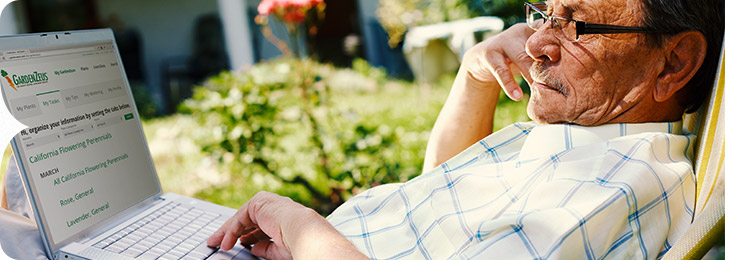Down and Dirty 13: Tips for “Summerer” Gardening In Hot Southern-California Areas (Summerer Part 2)

Down and Dirty Southern California Gardening
A weekly GardenZeus article series to help gardeners succeed in Southern California’s unique climates and growing conditions.
Post 13: Tips for “Summerer” Gardening In Hot Southern-California Areas (Summerer Part 2)
The high heat of late summer to early fall is normally the quietest part of the year for gardening in Southern California’s hot inland areas, including GardenZeus California Climate Zone 12: Southern Inland, More Extreme, and CA Zone 13: Southern Inland, Less Extreme. Don’t know your GardenZeus California Climate Zone? Enter your zipcode at GardenZeus.com.
For years I have considered this “summerer” period a hot version of winter for purposes of gardening. See Down and Dirty 12: Summer and “Summerer” for my introduction to the topic.
In the well-planned hot-summer Mediterannean-climate vegetable garden, all cool-season and most warm-season crops will be be harvested well before the arrival of high heat in midsummer and late summer. The most skillful summer gardening in these areas begins in late winter and early spring, when planting and harvest schedules are planned and executed that allow for ample harvests before midsummer.
The “summerer” period usually begins between about mid-July to mid-August, and often continues into October or even November. It’s a high-maintenance period for gardening and landscaping in hot inland Southern California, the time of year when a vegetable garden is most likely to become a battlezone of pest-and-disease infestations, stressed plants, and derailed or shortened harvests.
Tips for gardeners in inland areas during the heat of “summerer:”
1) Don’t try to start seeds or plant anything outdoors. While some established, heat-tolerant vegetables such as peppers and tomatoes may continue to yield during hot weather, all common annual vegetables and virtually all other landscape and garden plants are difficult-to-impossible to transplant or start effectively outdoors from seeds.
2) Don’t apply general fertilizers or nutrient-rich amendments. Don’t fertilize any plants unless you’re certain you know exactly what you’re doing and why you’re doing it. This applies doubly to any nitrogen fertilizers, including manures and urea. Any amendment other that surface mulch should be used carefully. Fertilizers may encourage or “force” plants to grow rapidly under adverse environmental conditions, which may cause sufficient stress to plants that they become susceptible to pests or diseases, shock, and other problems. There are many exceptions for judicious use of fertilizer during hot weather, such as for reblooming roses. If you must fertilize, wait until a cool period if possible.
3) Keep your attention on garden and landscape plants. It’s best to check plants once or twice per day, especially stressed or infested plants, plants currently producing harvest, and plants that are blooming or fruiting.
4) Watering becomes the essential task in vegetable gardens and non-native landscapes. Check and repair irrigation systems in late spring and again in midsummer. A clogged drip tube or blocked irrigation may rapidly result in stressed or dead plants during the high heat of late summer. Wilting harms plants. Most annual vegetables will begin to decline or become infested with pests or diseases after a few periods of wilting.
5) Provide shade during hot afternoons. See Tips for Shading Vegetables During Hot Weather for ideas and advice.
6) Chose your pest-and-disease battles carefully. The extra harvest may not be worth days or weeks of effort or expense.
7) Learn from challenges and successes, and keep records for a more-productive and healthier garden year after year. Which vegetables will you need to start earlier? Which should have had trellising or better planning for pest prevention? Which varieties did better or worse than expected? Which crops succeeded or failed and why?
8) Start early with vegetable gardening for fall. Vegetables that are slow to germinate, grow slowly as seedlings, or that tolerate a long growing period as seedlings, including bulb onions, parsley, and tomatoes, can be started as seeds in bright indoor areas to be ready for transplanting outdoors during cool periods in September or October. Future Down and Dirty articles will cover this topic in more detail. See Grow Tomato Transplants Indoors Starting Late Summer for one popular option.
“Down and Dirty Southern California Gardening” is a weekly GardenZeus article series in which expert Darren Butler shares more than 20 years of experience about what works and what doesn’t with gardening in Southern California:
Post 12: Summer and “Summerer” (Summerer Part 1)
Post 14: “Summerer” in Southern California’s Coastal Areas (Summerer Part 3)
All articles in this series: Down and Dirty Southern California Gardening
Enter your California zip code for customized advice by plant